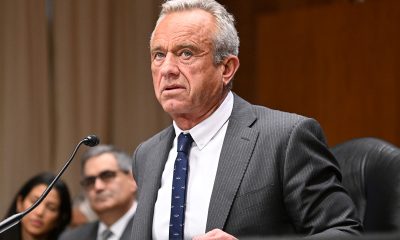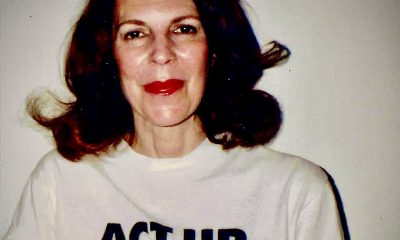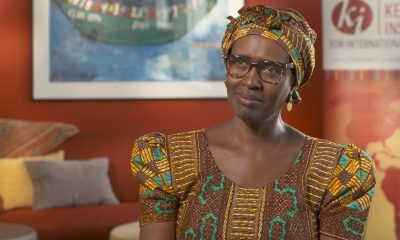National
N.Y. protesters see importance of LGBT economic issues
As demonstrations spread, so does gay visibility in movement

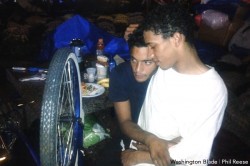
Jonathan "J.C." Lopez of Brooklyn, N.Y. has been 'camping' in Zuccotti Park with his boyfriend for nearly two weeks with the 'Occupy Wall Street' protests. (Washington Blade photo by Phil Reese)
NEW YORK — The Occupy Wall Street protests that began in New York City on Sept. 17 as an outpouring of frustration over the economy has captured the attention of the nation and spread to Washington and other cities.
Many protesters have decried government bailouts for financial institutions whose leaders escaped accountability for the recession. Others have focused on local issues and many LGBT advocates have joined the demonstrations. In New York, there is frustration among LGBT youth over cuts to programs like homeless youth shelters and HIV/AIDS care and prevention programs.
Jonathan “J.C.” Lopez of Brooklyn has, like many of these “campers,” been sleeping on the ground in Zuccotti Park in a sleeping bag with his boyfriend for nearly two weeks.
“I experienced a lot of messed up things, and a lot of good things that come along here, like how the cops were,” Lopez said about clashes with police that triggered widespread criticism. “They messed up and I’m glad that what they did is on camera.”
He hopes that the protests bring change to the New York Police Department.
“The good thing is that everybody works together for one thing and one thing only: Stand up,” Lopez said about the actions in New York’s financial district. “Everybody is tired of not speaking. The protest here is mainly for helping everybody. You know, the homeless, the justice, everything to make a change.”
Lopez sees unique economic challenges for LGBT youth and sees the protests as a catalyst to fix those problems.
“Certain people are just stranded in the street because of what they are,” he told the Blade as the sun was setting over his campsite. “Changing the whole economic system, changing people that are homeless, putting the programs back on, like the shelters and so on and so on, so people can get a job, people can get a home. I hope that will change.”
“Queer economic justice can mean several things,” Jake Goodman of New York activist group Queer Rising told the Blade. “On a very literal level, corporations — to my knowledge of which most have changed their employment policies to be favorable to at least gays and lesbian people — still donate a majority of their donations to candidates and to political parties that actively pursue policies that take away our rights or block us from our rights. So queer economic justice is to stop funding those people.”
“Also queer economic justice is to remember that gay people are not the only queer people — there are transgender people that need help with housing [and employment protections] and we need to remember our other brothers and sisters and ensure economic justice for them,” Goodman said, as a crowd gathered below the red “Joie de Vivre” statue towering over Zuccotti Park. “Economic justice for them is providing protection for [homeless queer youth] while they’re on the streets because families kick them out,” Goodman continued. “[Queer Rising is advocating] for additional $3 million per year in the budget every year, which would provide 100 additional beds per year until everybody has beds and protection.”
The Blade spent Monday and Tuesday in New York and LGBT protesters were found at every turn.
Diego Angarita of Massachusetts sees LGBT issues wrapped up with many of the other issues being addressed.
“As you saw in the declaration for Occupy Wall Street, there is still discrimination based on your sexual orientation and gender,” said Angarita, who was the sole marcher carrying a rainbow flag in a procession around the park. “Transgender people are discriminated against all the time. Imagine if there was a transgender stock trader. Are you kidding me that would never happen.”
“There are gay people who were immigrants, gay people who are undocumented, gay people who are on welfare, I mean gay people who are environmentalists, gay indigenous folks,” Angarita continued. “Being gay is so integrated into every form of identity that is out there and being the particular gay angle I guess is just discrimination for gender inequity and forms and in the sense of identity in general.”
Sunlight Foundation organizer Bridget Todd has been marching with the Occupy Washington protests in Lafayette Park since the start of the demonstrations and said the D.C. branch of the movement is only getting started.
“I don’t think that cops are going to force them to get out and they’re going to see if it peeters out on its own; but I actually don’t think it will, I think it’s only getting stronger,” Todd said of the D.C. demonstrations. “We were there just the other day on Sunday doing a teaching and trying to find ways to help them strengthen their movements and strengthen their ideas and really engage them.”
“I got laid off in April and we’re all suffering,” said Kristin Ridley, who traveled from Occupy L.A. to join the New York protest. “We’re all suffering and this is a basically becoming a plutocracy in this country, being ruled by the wealthy, and it hurts all of us.
“We need to go out and show support for a populist movement,” she continued. “And wrapped up into that are also a lot of the individual things that help people, for example, advancing equal rights based on things like sexual orientation, it just fits right into it.”
Though many members of the swelling group repeated that all were welcome, and that LGBT issues were not specifically being singled out because the economic policies being advocated would help all, some gay participants said they saw opportunities to educate passersby and others on unique LGBT economic issues. Paula Cambronero had an exchange with a man who approached her near the food trucks where interviews with protesters were being conducted.
“He was interested in what was going on … and he didn’t feel he understood what people were here for, so he started asking me a few questions,” Cambronero said. “He asked me what ‘real’ democracy meant, whether we thought we had a fake democracy now, where we were going, and he also asked me what we thought social justice meant. I said I thought it meant that everyone should have the same opportunities and the same rights, and he said that everybody already did.”
Cambronero used the inability of same-sex couples to marry as an example of inequality, which led him to proclaim all gay people can marry, as long as they marry the opposite sex.
“We had an interesting discussion where he shared his viewpoints of why he thought the law should not change, and I shared my opinion of why it should,” she told the Blade. “I hope I got him thinking.”
Rev. Magora Kennedy — whose hat was decorated with a rainbow flag — was in the Stonewall Inn the night that the police raid on the gay bar sparked three nights of unrest in New York City, leading to the dawn of the modern LGBT rights struggle.
“We were in the streets from that Friday until that Monday,” Kennedy said. “That weekend, there was very little ‘salt in the pepper.’ Most of us that were out there were people of color. The thing that happened with Stonewall, as the movement went on, it got whiter and whiter. Most of us that were involved with Stonewall, there’s not many of us that are alive today.”
Kennedy, a lesbian, was married to a gay man in the military. The two married to prevent Kennedy’s husband from being kicked out of the military. They had four sons. Kennedy now has 14 grandchildren and nine great grandchildren and calls herself the “gayest great-grandmother out of the closet.”
“I’m so sorry that he’s not alive today to know that ‘Don’t Ask, Don’t Tell’ was repealed and that gay people can openly join the services now.”
Kennedy sees the LGBT rights movement and the Occupy Wall Street protests as extensions of the civil rights movement.
“This whole thing is something that we’ve all been going through from the time of the civil rights movement,” she said above a chorus of protesters and drums rising from the center of Zuccotti Park, just steps from the site of the World Trade Center. “When they were putting together Wall Street … it was very, very white; no women and no people of color.”
She continued, “today … the people of color — the blacks, the Puerto Ricans, and just people of color in general — they gave them good salaries so they’d shut up. These people are making millions of dollars and as long as they stay quiet it’s a brand of new slavery and it’s economic slavery.”
“The state is a central organized power of violence, and that’s what forces violence against queers and everything else,” Vita told the Blade. “Queers in particular face violence and pressure from the state. For example, the issue of marriage. I’m not necessarily pro-marriage, I’m for getting the government out of marriage so there’s no bias either way for straight, gay or anybody.”
A local nanny who wished to remain anonymous came to the rally on Sept. 18, initially to support “the vague sentiments being expressed at the beginning, the sense of dissatisfaction with injustice.”
She decided to stay and has taken on the role of medic for the community of occupiers because she enjoys the community developing at Zuccotti Park.
“I think that what’s being built here is a revitalization of progressive politics and the labor movement and a lot of other things that I feel really needed some new energy.”
“The energy’s definitely gone up,” she said among the clamour of a call-and answer chant making its way across the park. “When it started it was maybe a couple hundred people, and it was a pretty consistent group of people, so we all knew each other. That’s changed.”
“One of the best things about this community is that everybody here is listening all the time,” the New York nanny-turned medic said. “so when we do things like, for example, saying ‘let’s go around the circle and say our names and our preferred gender pronoun,’ and somebody says ‘why should I need to say my preferred gender pronoun,’ we can explain, ‘not everybody here is going to prefer the pronoun that you may assume based on their body.’ And they sort of listen and go ‘oh, OK. I didn’t know that, and now I do, and now I have a new way to think about gender, and a new way to think about how people present themselves,’ that they can not only take into their interactions with people here, but hopefully take back home with them into their communities.”
“One of the reason that I’ve always opposed people like the Log Cabin Republicans, its not just that I’m a progressive, but I don’t believe that a conservative outlook — even a conservative economic outlook — can be consistent with gay rights,” the anonymous medic said. “I believe that the conservative political mindset is founded on elitism, its founded on special privileges, so it will never create a society in which LGBT people can live as equals to straight people and cisgender people. So if LGBT people want a society where they can be treated as the legal and cultural equal of the majority, they need to be part of a community that is working toward change and working toward more a equal rather than less equal community.”
Kat Adams, a queer minimum wage worker from Staten Island works with the medics at Zuccotti Park. He is eager to have a family some day, but as his salary barely pays his rent, he is reticent to start his family.
“Not by a long shot,” he said about whether or not minimum wage is a living wage. “I will not bring a child into a situation where I can’t even provide shoes.”
“Most of us have full time jobs,” he said of criticism of the protesters.
“What brought me here was just medical. I came down here with no interest in the politics, very little knowledge of what was going on, and honestly I didn’t think it would work, I didn’t think it mattered, and thought it would all fall apart within a couple weeks.”
“After seeing what happened Wednesday with the police confrontations and all the chaos, I consider myself part of it now,” Adams said, recalling an ugly injury he helped treat, of a camper who was hit so hard by a police baton he required EMT attention.
“You’ll see the rainbow flag out, you’ll see a lot of people, but its such a diverse group, but everyone looks so ‘weird,’ that you’re not going to find us.”
Many protesters believe that mainstream media outlets have been resistant to fairly portraying the actions in New York’s financial district.
“You haven’t seen nearly as much coverage [of the protests] as you would think there would be of something like this big and loud and widespread, say, compared to the Tea Party where fifty people show up and it’s and it’s backed by a political party and they get a lot of attention,” said Kristin Ridley. “But when its this big, widespread, truly grassroots movement it doesn’t get nearly the same amount of attention.”
Though their goals are intentionally abstract, according to the back page of the protester’s daily newspaper, ‘The Occupied Wall Street Journal,’ many of those that spoke with the Blade feel that progress will spark from the colorful demonstrations.
Kat Adams notes that many groups from across the political and economic spectrum, from libertarian Ron Paul supporters to communists to anarchists have assembled at the park to exchange ideas and express frustration with a political process that has made them feel left behind.
“You see arguments that spring up, but I think that’s good,” Adams continued. “A lot of people talk about how aimless this is, but that really is expressive of the idea here. Its all these different groups who would never talk to each other, let alone hang out like this, have come together because they all see the same problem.”
“I think they’re actually constructive arguments, people are trying to understand one another, and help others understand them.”
“What we want to happen here is a change to the way the process works, is a change to the way society is ordered,” The anonymous medic summarized the goals of the occupation. “So that it is not the richest part of society that has all the political power, so its not the richest part of society that has all of the economic power, so that wealth is more fairly distributed, and so that things like education, food, health care, housing are recognized as basic human rights are treated as basic human rights by the government and by society.”
Ethan Lee Vita agrees that the Occupy Wall Street protests and the dozens more that have began to appear all over the nation, are a good opportunity for a wide-range of like-minded individuals to network and exchange ideas.
“I’m not entirely sure if the occupation itself will forge anything, but the bonds that are built within it, and the ideas exchanged will be very helpful down the line,” Vita concluded.
Bridget Todd supports the Wall Street group, but thinks that the Washington contingency will be even more successful at initiating change.
“I think Wall Street is important but I think K Street is arguably more important; that’s where a lot of the money goes and that’s where a lot of it happens so I think it’s very important and I’m glad to see that this is a sort of countrywide movement but especially DC and New York.”
Stonewall veteran Reverend Magora Kennedy believes uniting different movements against injustice is vital.
“We’re all in this together. Whether you’re gay or straight, white, black, blue, green, whatever; we’re all in this together because if we don’t come together and unite and do something about this we will perish.”
U.S. Military/Pentagon
Air Force rescinds rule barring inclusion of preferred pronouns in email signatures
Conflict with language in military funding package may explain reversal
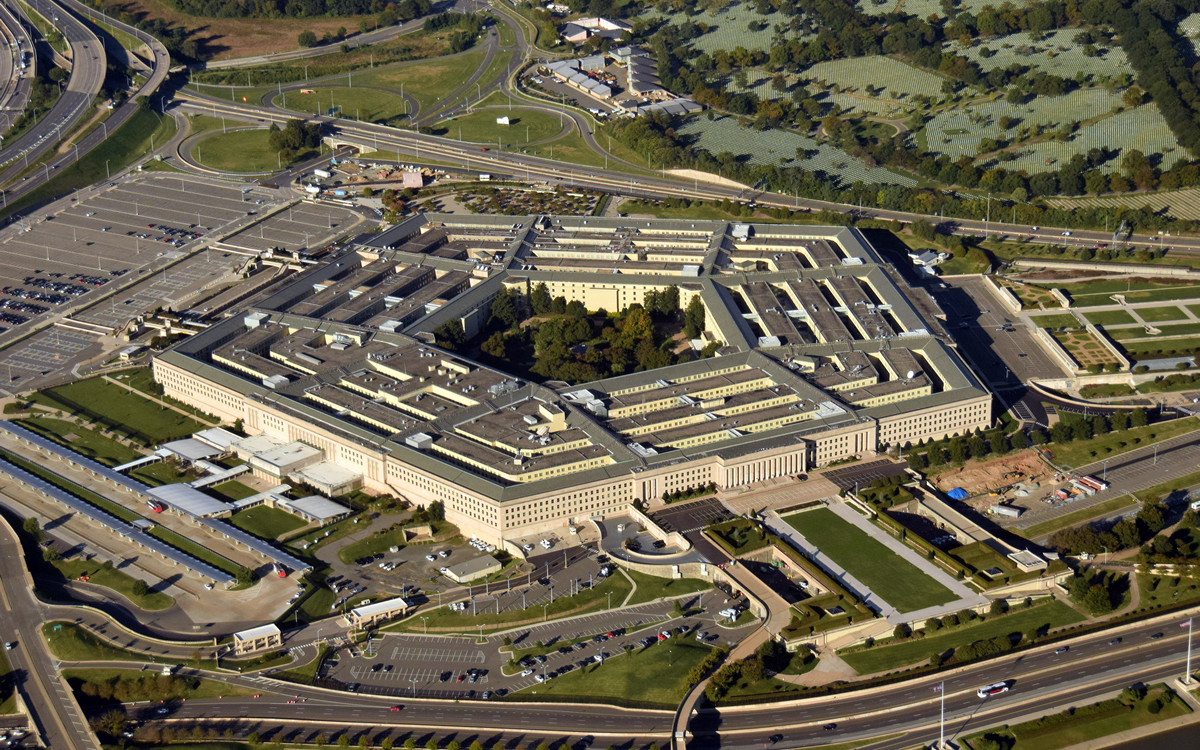
The U.S. Air Force has issued a “directive to cease the use of ‘preferred pronouns’ (he/him, she/her, or they/them) to identify one’s gender identity in professional communications,” according to a report published in the Hill on Wednesday.
The rule, which applies to both airmen and civilian employees, was first adopted on Feb. 4 pursuant to President Donald Trump’s anti-transgender executive order called, “Defending Women from Gender Ideology Extremism and Restoring Biological Truth to the Federal Government.”
Days after the administration’s issuance of that order on the first day of the president’s second term, the Office of Personnel Management instructed agencies across the whole of the federal government to remove pronouns from email signatures and enforce the policy barring employees from using them.
Additionally, on Jan. 27 Trump published an order barring trans people from joining the U.S. Armed Forces, indicating that those who are currently in serving would be separated from the military. The Pentagon is fending off legal challenges to the ban in federal courts.
Particularly given the extent of the new administration’s efforts to restrict the rights of trans Americans and push them out of public life, the Air Force’s reversal of the pronoun guidance was surprising.
According to reporting in Military.com, the move might have come because officials concluded the rule was in conflict with language in the military appropriations funding legislation passed by Congress in 2023.
The NDAA established that the defense secretary “may not require or prohibit a member of the armed forces or a civilian employee of the Department of Defense to identify the gender or personal pronouns of such member or employee in any official correspondence of the Department.”
The White House
USCIS announces it now only recognizes ‘two biological sexes’
Immigration agency announced it has implemented Trump executive order

U.S. Citizenship and Immigration Services on Wednesday announced it now only “recognizes two biological sexes, male and female.”
A press release notes this change to its policies is “consistent with” the “Defending Women from Gender Ideology Extremism and Restoring Biological Truth to the Federal Government” executive order that President Donald Trump signed shortly after he took office for the second time on Jan. 20.
“There are only two sexes — male and female,” said DHS spokesperson Tricia McLaughlin in a statement. “President Trump promised the American people a revolution of common sense, and that includes making sure that the policy of the U.S. government agrees with simple biological reality.”
“Proper management of our immigration system is a matter of national security, not a place to promote and coddle an ideology that permanently harms children and robs real women of their dignity, safety, and well-being,” she added.
The press release notes USCIS “considers a person’s sex as that which is generally evidenced on the birth certificate issued at or nearest to the time of birth.”
“If the birth certificate issued at or nearest to the time of birth indicates a sex other than male or female, USCIS will base the determination of sex on secondary evidence,” it reads.
The USCIS Policy Manuel defines “secondary evidence” as “evidence that may demonstrate a fact is more likely than not true, but the evidence does not derive from a primary, authoritative source.”
“Records maintained by religious or faith-based organizations showing that a person was divorced at a certain time are an example of secondary evidence of the divorce,” it says.
USCIS in its press release notes it “will not deny benefits solely because the benefit requestor did not properly indicate his or her sex.”
“This is a cruel and unnecessary policy that puts transgender, nonbinary, and intersex immigrants in danger,” said Immigration Equality Law and Policy Director Bridget Crawford on Wednesday. “The U.S. government is now forcing people to carry identity documents that do not reflect who they are, opening them up to increased discrimination, harassment, and violence. This policy does not just impact individuals — it affects their ability to travel, work, access healthcare, and live their lives authentically.”
“By denying trans people the right to self-select their gender, the government is making it harder for them to exist safely and with dignity,” added Crawford. “This is not about ‘common sense’—it is about erasing an entire community from the legal landscape. Transgender, nonbinary, and intersex people have always existed, and they deserve to have their identities fully recognized and respected. We will continue to fight for the rights of our clients and for the reversal of this discriminatory policy.”
Federal Government
Mass HHS layoffs include HIV/AIDS prevention, policy teams
Democratic states sue over cuts

Tuesday began a series of mass layoffs targeting staff, departments, and whole agencies within the U.S. Department of Health and Human Services under Secretary Robert F. Kennedy Jr., who reportedly plans to cut a total of 10,000 jobs.
On the chopping block, according to reports this week, is the Office of Infectious Disease and HIV/AIDS Policy. A fact sheet explaining on the restructuring says “a new Administration for a Healthy America (AHA) will consolidate the OASH, HRSA, SAMHSA, ATSDR, and NIOSH, so as to more efficiently coordinate chronic care and disease prevention programs and harmonize health resources to low-income Americans.”
The document indicates that “Divisions of AHA include Primary Care, Maternal and Child Health, Mental Health, Environmental Health, HIV/AIDS, and Workforce, with support of the U.S. Surgeon General and Policy team.”
“Today, the Trump administration eliminated the staff of several CDC HIV prevention offices, including entire offices conducting public health communication campaigns, modeling and behavioral surveillance, capacity building, and non-lab research,” said a press release Tuesday by the HIV + Hepatitis Policy Institute.
The organization also noted the “reassignments” of Jonathan Mermin, director of the National Center for HIV, Viral Hepatitis, STD, and TB Prevention, and Jeanne Marrazzo, director of the National Institutes of Health’s National Institute of Allergy and Infectious Diseases. Both were moved to the Indian Health Service.
“In a matter of just a couple days, we are losing our nation’s ability to prevent HIV,” said HIV + Hepatitis Policy Institute Executive Director Carl Schmid. “The expertise of the staff, along with their decades of leadership, has now been destroyed and cannot be replaced. We will feel the impacts of these decisions for years to come and it will certainly, sadly, translate into an increase in new HIV infections and higher medical costs.”
The group added, “We are still learning the full extent of the staff cuts and do not know how the administration’s announced reorganization of HHS will impact all HIV treatment, prevention, and research programs, including President Trump’s Ending the HIV Epidemic initiative,” but “At the moment, it seems that we are in the middle of a hurricane and just waiting for the next shoe to drop.”
A group of 500 HIV advocates announced a rally planned for Wednesday morning at 8 a.m., at the U.S. Capitol lawn across from the Cannon House Office Building, which aims to urge Congress to help stop the cuts at HHS.
“Over 500 advocates will rally on Capitol Hill and meet with members of Congress and Hill staff to advocate for maintaining a strong HIV response and detail the potential impact of cuts to and reorganization of HIV prevention and treatment programs,” the groups wrote.
The press release continued, “HHS has stated that it is seeking to cut 10,000 employees, among them 2,400 CDC employees, many doing critical HIV work. It also seeks to merge HIV treatment programming into a new agency raising concerns about maintaining resources for and achieving the outstanding outcomes of the Ryan White HIV/AIDS Program.”
On Tuesday a group of Democratic governors and attorneys general from 23 states and D.C. filed a lawsuit against HHS and Kennedy seeking a temporary restraining order and injunctive relief to halt the funding cuts.
U.S. Centers for Disease Control and Prevention withdrew approximately $11.4 billion in funding for state and community health departments during the COVID-19 pandemic response, along with $1 billion to the Substance Abuse and Mental Health Services Administration.
“Slashing this funding now will reverse our progress on the opioid crisis, throw our mental health systems into chaos, and leave hospitals struggling to care for patients,” New York Attorney General Letitia James said.
-

 Music & Concerts5 days ago
Music & Concerts5 days agoKylie brings ‘Tension’ tour to D.C.
-
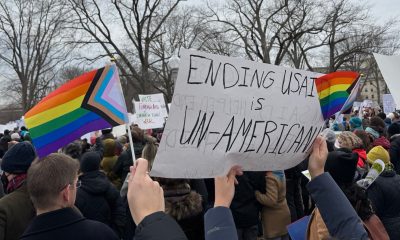
 South Africa4 days ago
South Africa4 days agoUS-funded South African LGBTQ groups curtail operations
-
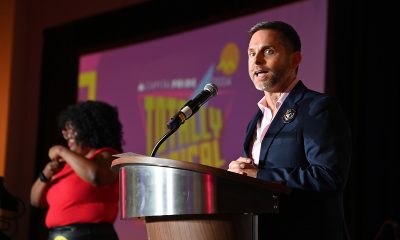
 District of Columbia5 hours ago
District of Columbia5 hours agoWorldPride organizers may warn trans people from abroad not to attend event
-
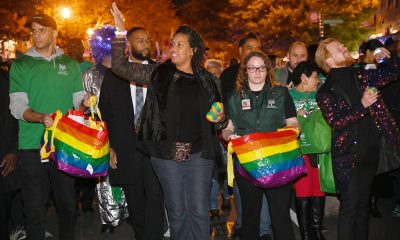
 District of Columbia2 days ago
District of Columbia2 days agoLocal officials weighing impact of Trump’s D.C. executive order

